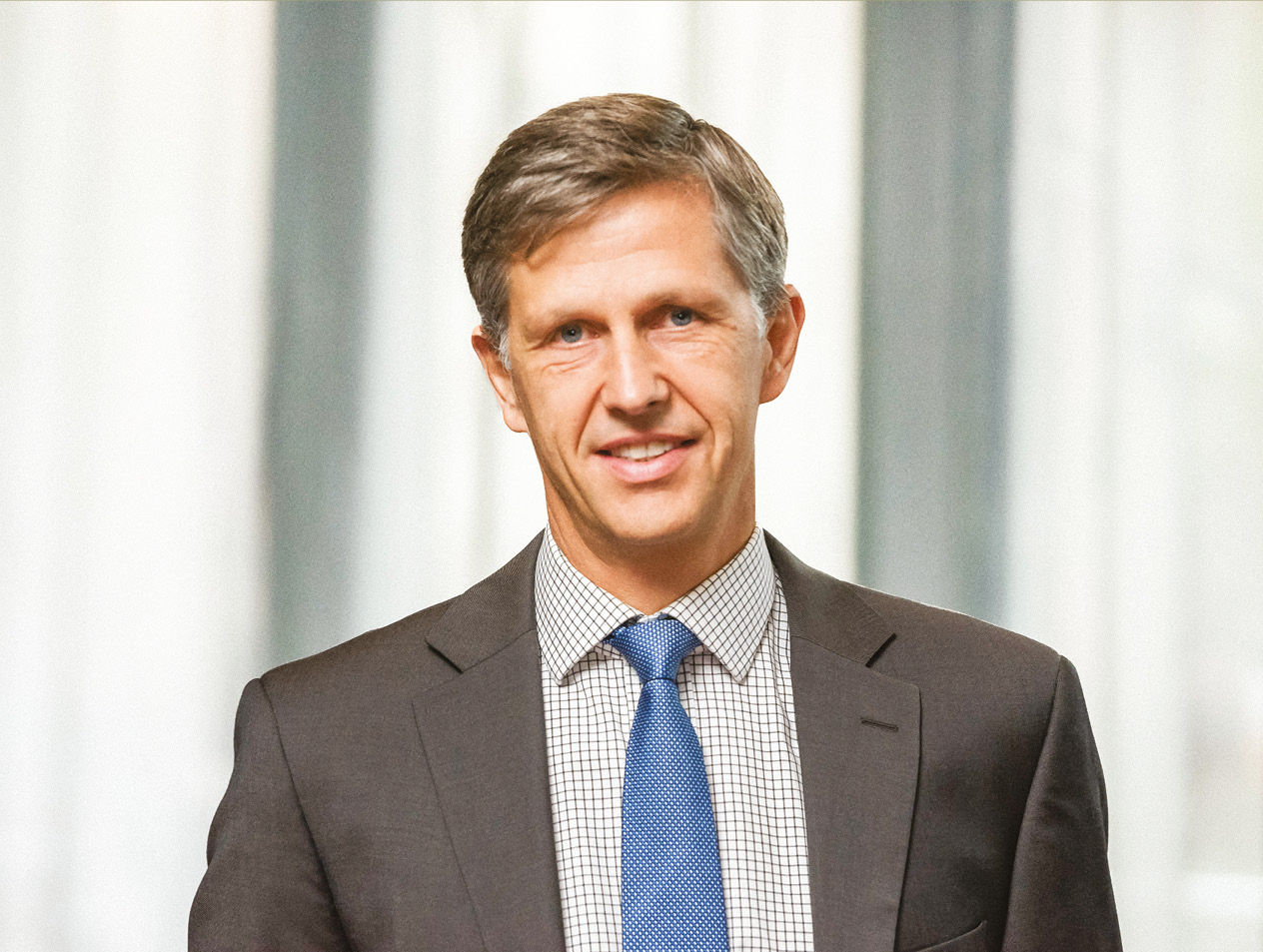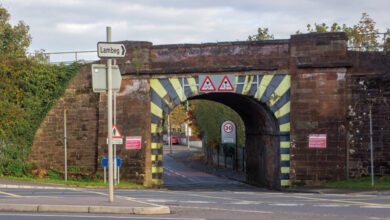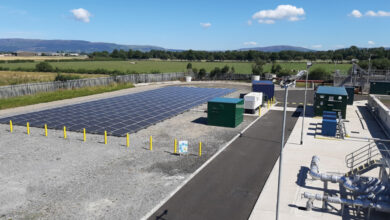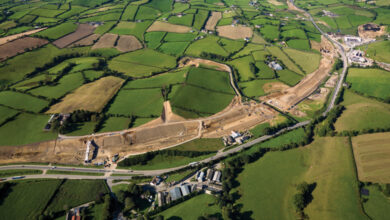EIB infrastructure funding

European Investment Bank’s Tanguy Desrousseaux outlines the European perspective on funding models for strategic infrastructure projects.
“Funding is one thing, but we need to prioritise projects,” asserts Desrousseaux. Making an important distinction between funding and financing he notes; “Funding is something that you have to discuss with your authorities, when discerning a priority investment and whether the investment will go forward. The EIB comes later for the financing. What I mean here is that we only come into play, providing finance and expertise for sound and sustainable investment projects, once a decision has been taken to fund the project.”
The EIB is the EU bank and its core remit is finance. “That is to say that we work together with the Commission which will give us eligibility mandates. In terms of capital breakdown, the major shareholders are Germany, France, Italy and the United Kingdom.” The EIB is now the largest natural lender and borrower in the world with a volume of €70 billion new loans each year. The Bank’s money is raised it on the debt-capital market with a triple-A rating which helps to obtain the most attractive conditions. “Given that we are a not-for-profit organisation, most of the financial advantage that we can generate through this favourable fundraising is passed on to our clients.”
Desrousseaux highlights the 2015 European Commission’s Investment Plan for Europe, also known as the Juncker plan, the purpose of which is to support investment once projects have been launched. “My encouragement would be to focus on selecting those projects that will go forward because there is no shortage of capital currently. Financing may not be the prime issues, rather it is how you can fund projects.”
As a wholesale bank, EIB deal with a number of large projects, about 450-500, every year across many countries but with its prime interests in Europe. The average cost of projects that it finances is between €100 and €150 million. “This is pretty significant and the reason for that is that every single project has to be presented to our Board of Directors. Therefore, either we have large enough projects or we try to bundle projects. As such, you shouldn’t be scared if your project doesn’t necessarily reach the €100 million threshold.”
The EIB does not work with bankers in isolation, but with engineers, economists, social and environmental experts. “When it comes to project selection or the appraisal of the soundness and sustainability of projects, it is only once the banking sustainability is confirmed alongside the technical and socio-economic sustainability of the project that we can finance.”
The influence of the EIB is cross-sectoral and far as infrastructure is concerned, its primary interests are in healthcare, transport, education utilities and digital energy where the impact is upon the daily lives of citizens. “Infrastructure is about a quarter of everything we finance. When we analyse projects, we also ask questions about the climate action impact of the project in question, whether it is delivering an improvement and we take this into account overall.”
The first ever capital increase since the creation of the Bank occurred in the late 1950s. It was a capital increase of over €10 billion, which enabled the financing of an additional €60 billion of projects. “With the leverage effect, which we calculate bearing in mind that we only partially finance projects, we have generated additional investments of around €180 billion. That was a real success which formed the basis of the next investment plan for Europe – the so-called Juncker plan which means that when we allocate money it can also have a significant leverage effect.”
Most of what EIB do is lending. Lending by way of loans, guarantees, equity participation, investing in infrastructural funds, blending and advising. “Furthermore, there is a strong need for project selection and for some projects, in their very early phase, to receive technical assistance or support. Likewise, if a project is perhaps not yet bankable, access can be provided to an advisory hub – a team of expert engineers and financiers – that could help present the project and anticipate the questions fielded by the financing world.
“I would encourage you to talk to the EIB pretty early on when you have a project because then we can guide you as to what will be important to us and at what stage we can come into play. Typically, once we have identified a project opportunity with you, we will define this project and identify the costs which would be eligible for EIB financing. Once we have defined this framework, then we will undertake a due diligence as indicated on the second part of the project appraisal. This will typically start once the decision to launch the project has been taken and when work permits have been granted or are imminently about to be granted.”
“The message I would like to leave with you is that the EIB is open for business and open for business with Ireland. We would be very keen to look at your infrastructure projects and we would be delighted to touch base with you.”
The EIB looks at projects from both a financial and a socio-economic perspective. While the EIB does not have a credit committee like other banks per-se, it gathers converging opinions from the various services of the bank. All these opinions are then presented to the EIB President and resident members of the management committee in Luxembourg.
However, while they meet on a weekly basis, the Board of Directors only meet 10 times a year. Therefore, in order to present a project, a slot must be booked several months ahead. “We need to be ready well in advance, so please plan for quite a long appraisal process for an EIB loan. It could be a minimum of four to six months or it could be longer. We operate very differently from a commercial bank in that respect,” Desrousseaux advises.
The usual cycle follows in which a finance contract is negotiated and within this are project related contractual clauses. “Just as we take a close interest in the project before it is financed, we also want to make sure that the project is realised and there are PPP milestones that will be checked on a regular basis. For a straight cash-flow financing this represents a reassurance that the project was realised and the money was spent on the project.”
The European Fund for Strategic Investments is not as much as a fund as a guarantee. “Basically it means that the EIB will provide a loan for a project and this will be considered guaranteed by the European Fund for Strategic Investment. This enables us to take additional credit risk than we have done before having this guarantee. This is especially relevant for project finance PPPs where in the past we may have been constrained by volumes or by the credit risk that we could take or not take.
“This is mostly relevant for the private sector where in the past, the EIB would have asserted that in order to protect our triple-A rating and for portfolio management purposes, we typically lend to investment grade counterparts. Now we can move across other categories, possibly going to sub-investment grade territory, thanks to this guarantee.”
In Ireland, more than €3 billion has been loaned to support projects over the last five years, the bulk of finance being in the infrastructure sector. “The message I would like to leave with you is that the EIB is open for business and open for business with Ireland. We would be very keen to look at your infrastructure projects and we would be delighted to touch base with you,” Desrousseaux concludes.






